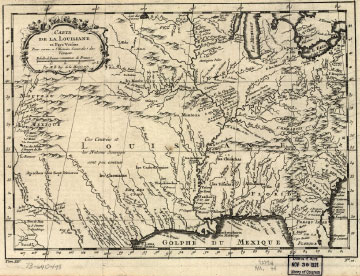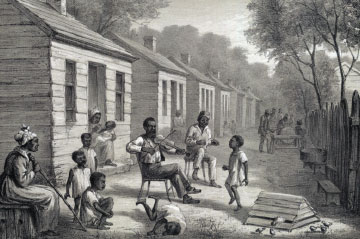Louisiana


Louisiana is a state in the southern United States that stands at the intersection of the Mississippi River and the Gulf of Mexico. Because of the significance of water in the state’s geography, Louisiana became an important transit point for goods and people passing from the Atlantic system to the North American interior and vice versa. The city of New Orleans has long been one of the Gulf Coast’s largest and most active ports. Louisiana’s social and cultural history is unusual, perhaps unique, in the United States, as Louisiana at various times fell under the control and influence of Spain, France, Britain, and Native Americans.
Spanish explorers who reached Louisiana in the early 1500s noted the presence of diverse native peoples who lived in the region. Spain gave little attention to the area, however, and the first European claims came from France. In the late 1600s, French explorers set out from Canada to find the end of the Mississippi River. In 1682 a group led by La Salle floated down to the mouth of the river and claimed the Mississippi watershed for France. France became more interested in asserting this claim in light of growing English settlements in the Carolinas and Spanish settlements at Pensacola.
In 1718, the site of New Orleans (or Nouvelle Orleans) was chosen and work began to clear the site and construct a wharf. The town became French Louisiana’s commercial and political capital in 1721. The colony promoted emigration and its population steadily increased. Settlers who turned to agriculture found a need for labor in the colony. Following the example of the Caribbean, colonists began importing enslaved African labor as early as 1719. As the enslaved population grew, legislators adopted the prevailing French laws on slavery—the Code Noir—in 1724. The code provided enslaved people some protections against abuse and allowed them days of rest and church instruction, but still limited their legal and social rights.
The Seven Years’ War (1754–1763) began in North America but spread to Europe and became a major international conflict. French Louisiana was not involved in any fighting, but the war forced a major change for the colony. The 1763 treaty that ended the war demanded that France hand over possession of Louisiana to Spain. Louisiana and the southern Mississippi valley remained under Spanish control until 1800, when Napoleon was able to negotiate its return. While this pleased those in the colony who disliked Spanish rule, France did not hold Louisiana for long. When approached by an American envoy seeking to purchase New Orleans, Napoleon offered to sell the whole Louisiana territory, likely in an attempt to raise money to fund his ongoing wars. The American team paid approximately US$15M for 2.1M square kilometers of land stretching north and northwest from the mouth of the Mississippi River.
As part of the United States, migration and settlement in Louisiana increased, especially after cotton became the country’s most valuable crop. New Orleans became a major hub and marketplace in the domestic slave trade. Even though transatlantic shipments were prohibited, traders actively moved enslaved Africans and African Americans from places in the upper south to New Orleans for resale.
History & Memory
Related Pages:
-
 New Orleans, Louisiana
New Orleans, Louisiana
-
 Abdul Rahman
Abdul Rahman
-
 The Big House
The Big House
-
 American Revolution
American Revolution
-
 Middle Passage Ceremonies and Port Markers Project
Middle Passage Ceremonies and Port Markers Project

